Masonry In The Media - Bradbury Building, Palace of Fine Arts, The White House, and More
Words: Lily Burger
Photos: drnadig, tupungato, Pedro Costa Simeao, stonelm4, Marc Dufresne, JHVEPhoto, Jim Brown
The magic of movies is heightened by the settings its creators chose. It can influence the tone of the scene by featuring locations with dramatic stonework or soften the scene with embellished details of masonry design. These four structures served
as pivotal backdrops that enhanced the atmosphere of the movies they were in while also being excellent examples of masonry-designed buildings
Bradbury Building - Blade Runner
Completed in 1893 in downtown Los Angeles, the Bradbury Building showcases meticulous masonry work throughout its structure, blending various materials to create a stunning visual and tactile experience. The exterior features red brick, a common choice
for Victorian architecture, creating a sturdy yet elegant facade. Likewise, the interior is adorned by terra cotta ornamentation on the upper levels and majestic marble staircases throughout. Originally commissioned by mining millionaire Lewis
L. Bradbury and designed by George H. Wyman, it is renowned for its intricately designed atrium that combines ironwork and masonry. As featured in the 1982 film "Blade Runner," the building serves as the perfect backdrop for the film’s juxtaposition
of past and future. When Harrison Ford’s Rick Deckard pursues one of the replicants, a bioengineered human-like being, through the building’s labyrinthine corridors, the Bradbury's timeless design is contrasted by the futuristic, dystopian atmosphere
of the film.
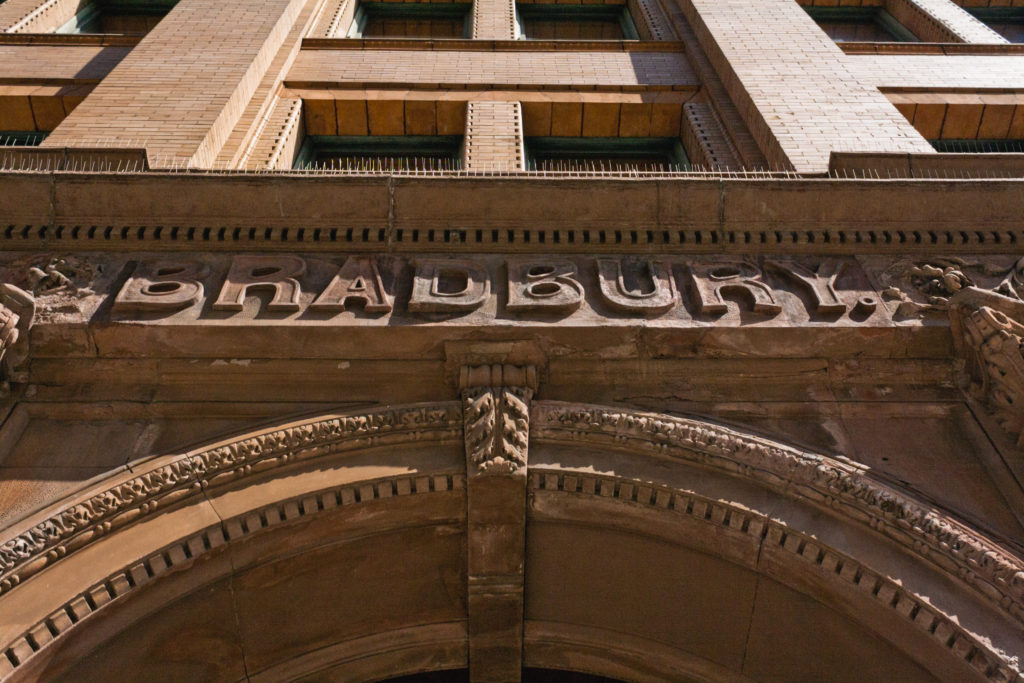 Los Angeles, California, USA - August 22, 2015: The Bradbury Building in downtown Los Angeles.
Los Angeles, California, USA - August 22, 2015: The Bradbury Building in downtown Los Angeles.
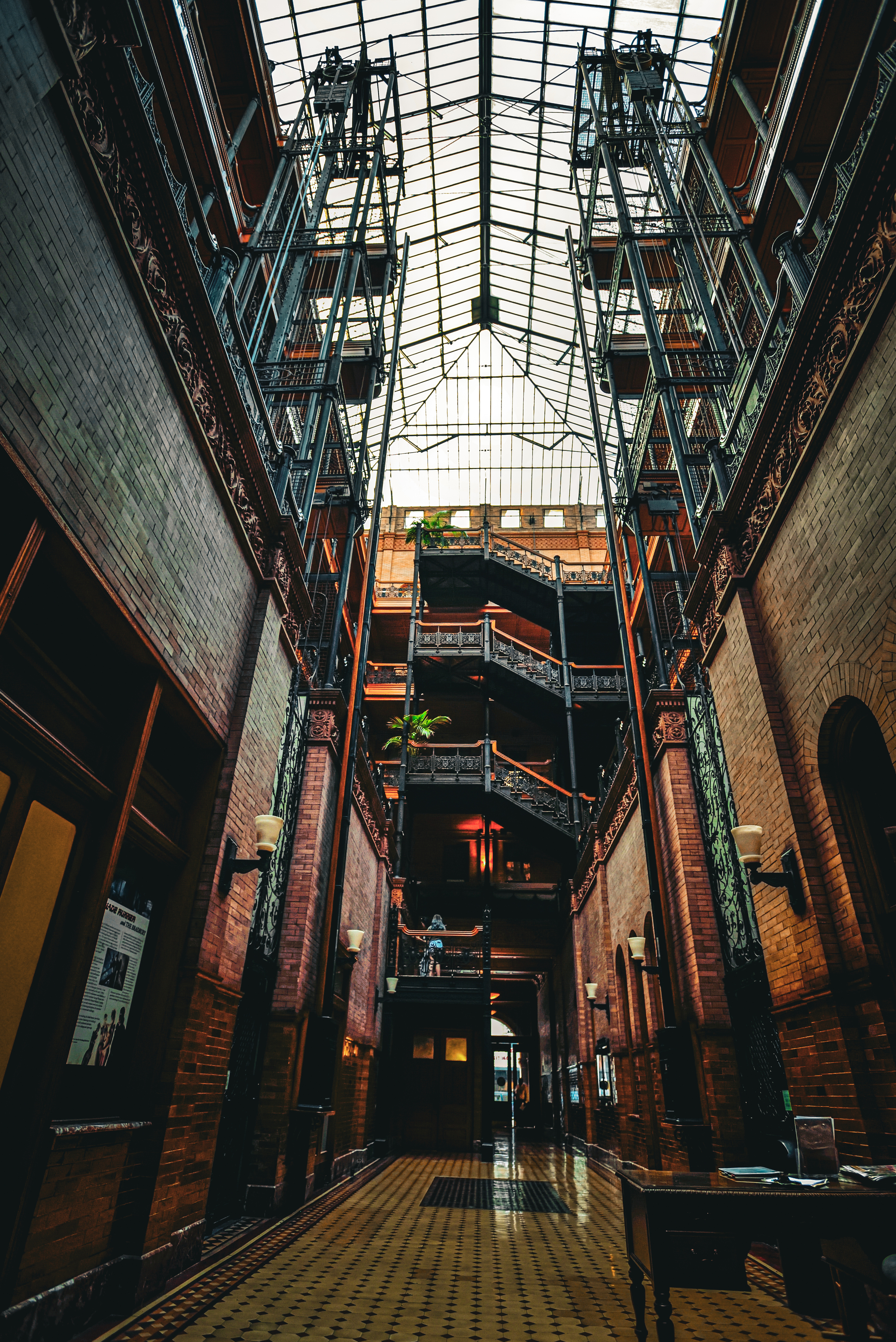 Los Angeles, CA, USA - August 23, 2017: Inside the famous Bradbury Building in Downtown LA.
Los Angeles, CA, USA - August 23, 2017: Inside the famous Bradbury Building in Downtown LA.
304 S Broadway, Los Angeles, CA 90013
The Palace of Fine Arts - The Rock
The Palace of Fine Arts located in San Francisco, California, was designed by Bernard Maybeck for the 1915 Panama-Pacific International Exposition as a sign of San Francisco’s prosperity since the 1906 earthquake. With its Greco-Roman design, it represents
the resilient and artistic spirit of San Francisco. The exterior is adorned with intricately carved Corinthian columns and decorative molding crafted from white marbled concrete. In the 1996 movie "The Rock," a pivotal scene, where Sean Connery’s
character manages to evade authorities who want to bring him back to Alcatraz to finish a government mission, takes place at the Palace of Fine Arts. His character shares an emotional reunion with his estranged daughter featuring the backdrop
of the serene and warm beauty of the Palace of Fine Arts in contrast to the severe and cold design of Alcatraz. The Palace of Fine Arts’s soft and bright atmosphere allows for a respite during the tense and chaotic film.
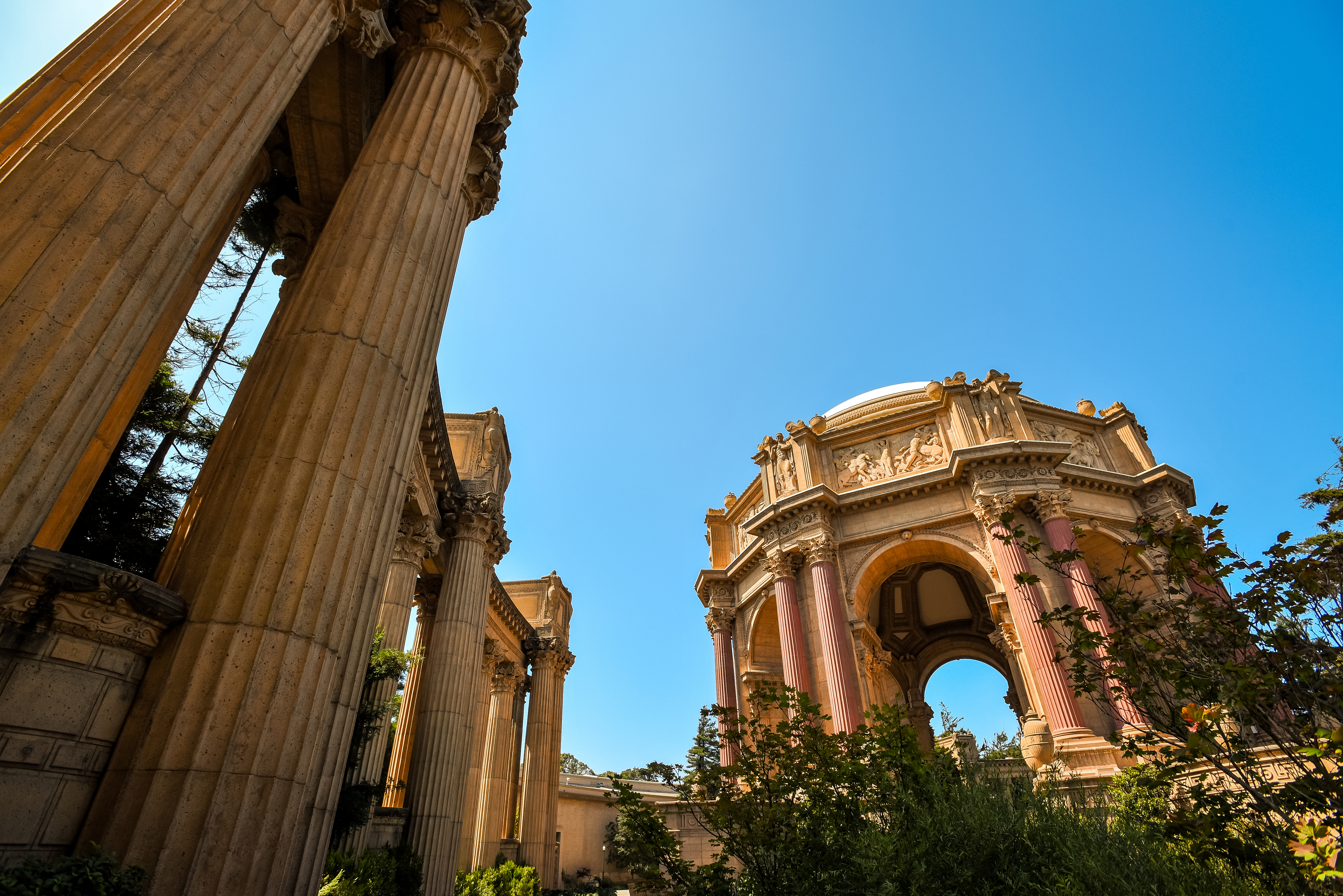 San Francisco, CA, USA - August 16, 2017: The Palace of Fine Arts colonnade and rotunda on a bright summer day.
San Francisco, CA, USA - August 16, 2017: The Palace of Fine Arts colonnade and rotunda on a bright summer day.
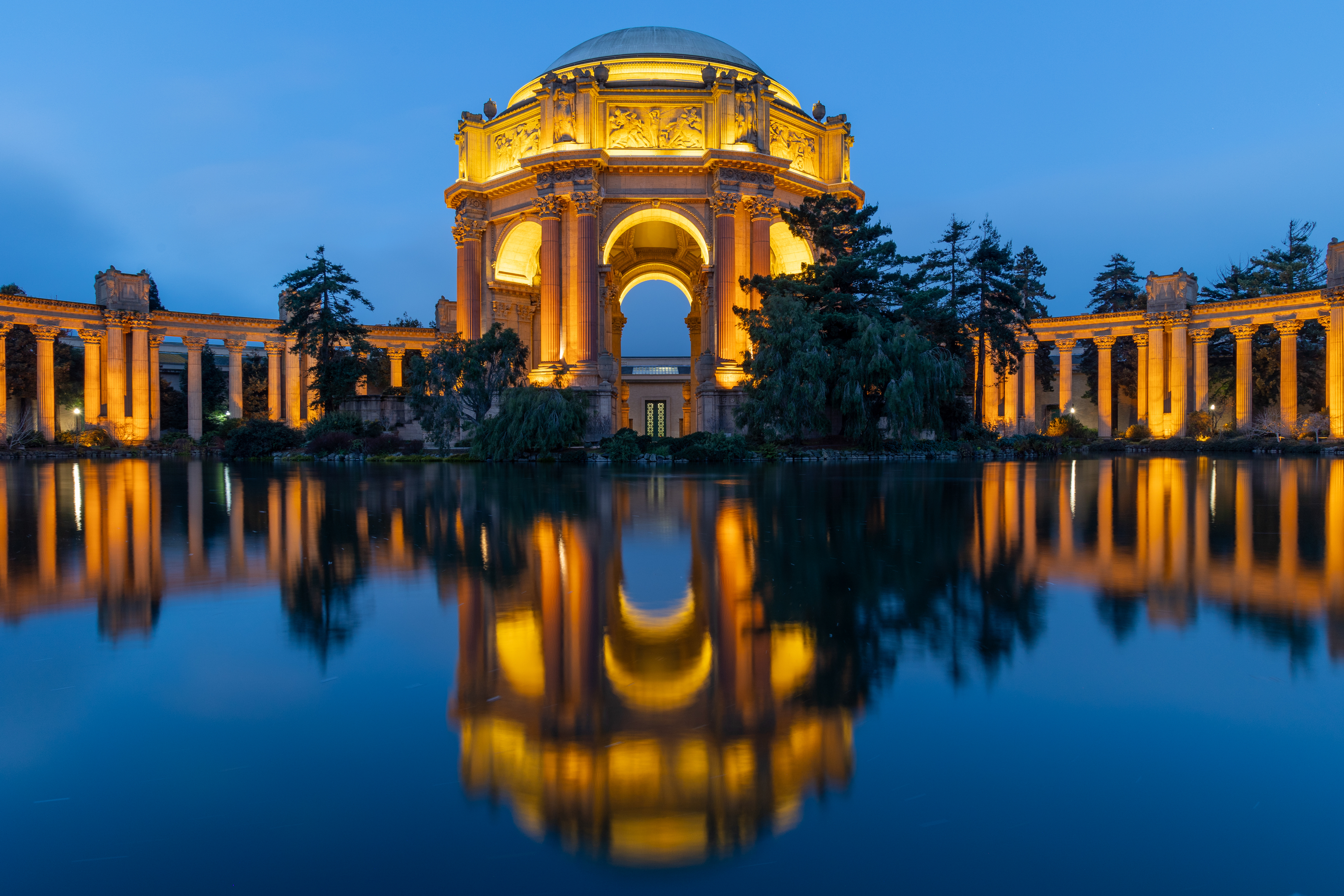 San Francisco, CA – January 6 2024: Blue hour photo of the Palace of Fine Arts in San Francisco.
San Francisco, CA – January 6 2024: Blue hour photo of the Palace of Fine Arts in San Francisco.
3601 Lyon St, San Francisco, CA 94123
The White House - Independence Day
The White House, an emblem of American leadership, has a rich history dating back to its construction between 1792 and 1800. Designed by Irish architect James Hoban, and made from aquia sandstone and bricks, it was meant to be a symbol of the new
nation’s permanence and the president’s residence. It has been the official residence of every U.S. president since John Adams. The building has undergone several renovations and expansions, which houses the Oval Office. Besides being a home,
the White House functions as the president’s workplace and as a stage for diplomatic engagements, state events, and national celebrations.
In the 1996 blockbuster film "Independence Day," directed by Roland Emmerich, the White House plays a pivotal symbolic role. The film depicts an alien invasion threatening Earth's survival, and one of its most iconic scenes is the dramatic destruction
of the White House by a massive alien laser beam. The annihilation of the White House serves to heighten the emotional stakes of the film, demonstrating that even the most stalwart symbols of national security can be brought down, evoking a strong
sense of urgency, fear, and resilience among the characters and the audience. This cinematic moment has since become one of the most memorable and discussed scenes in film history, solidifying the White House's significance not just in reality
but in popular culture as well
 The south facade of the White House.
The south facade of the White House.
 White House in Washington D.C. United States national landmark.
White House in Washington D.C. United States national landmark.
1600 Pennsylvania Avenue NW, Washington, DC 20500
Parkwood Estate - Billy Madison
Parkwood Estate, located in Oshawa, Ontario, was built between 1916 and 1917 as the residence of Canadian auto baron Samuel McLaughlin, founder of General Motors of Canada. The estate showcases early 20th-century opulence with its stunning gardens,
elegant interiors, and neoclassical architecture crafted from stone and brick, adorned with richly detailed woodwork and marble accents. Parkwood has served as a backdrop for numerous film and television productions, including the 1995 comedy
"Billy Madison." In the film, the estate stands in for the Madison family mansion, providing the opulent setting where Adam Sandler's character, Billy Madison, humorously undertakes a journey to complete his education and prove his worthiness
as an heir.
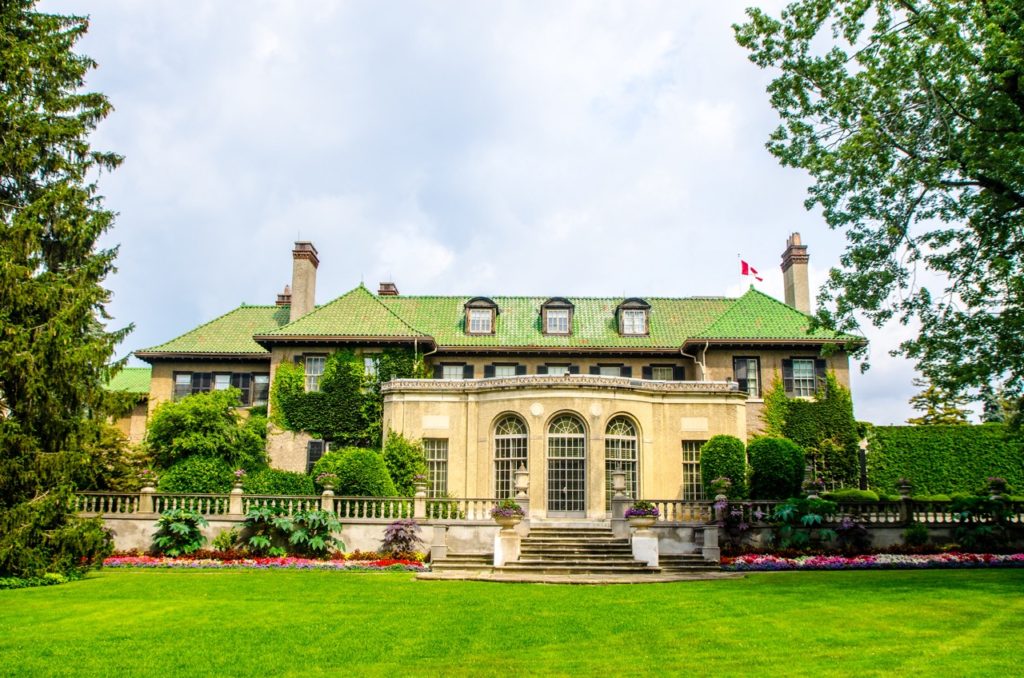 Oshawa, Ontario, Canada - July 01, 2019: Building at Parkwood Estate in Oshawa, Ontario, Canada. Parkwood Estate was the residence of Samuel McLaughlin, now is a a National Historic Site.
Oshawa, Ontario, Canada - July 01, 2019: Building at Parkwood Estate in Oshawa, Ontario, Canada. Parkwood Estate was the residence of Samuel McLaughlin, now is a a National Historic Site.
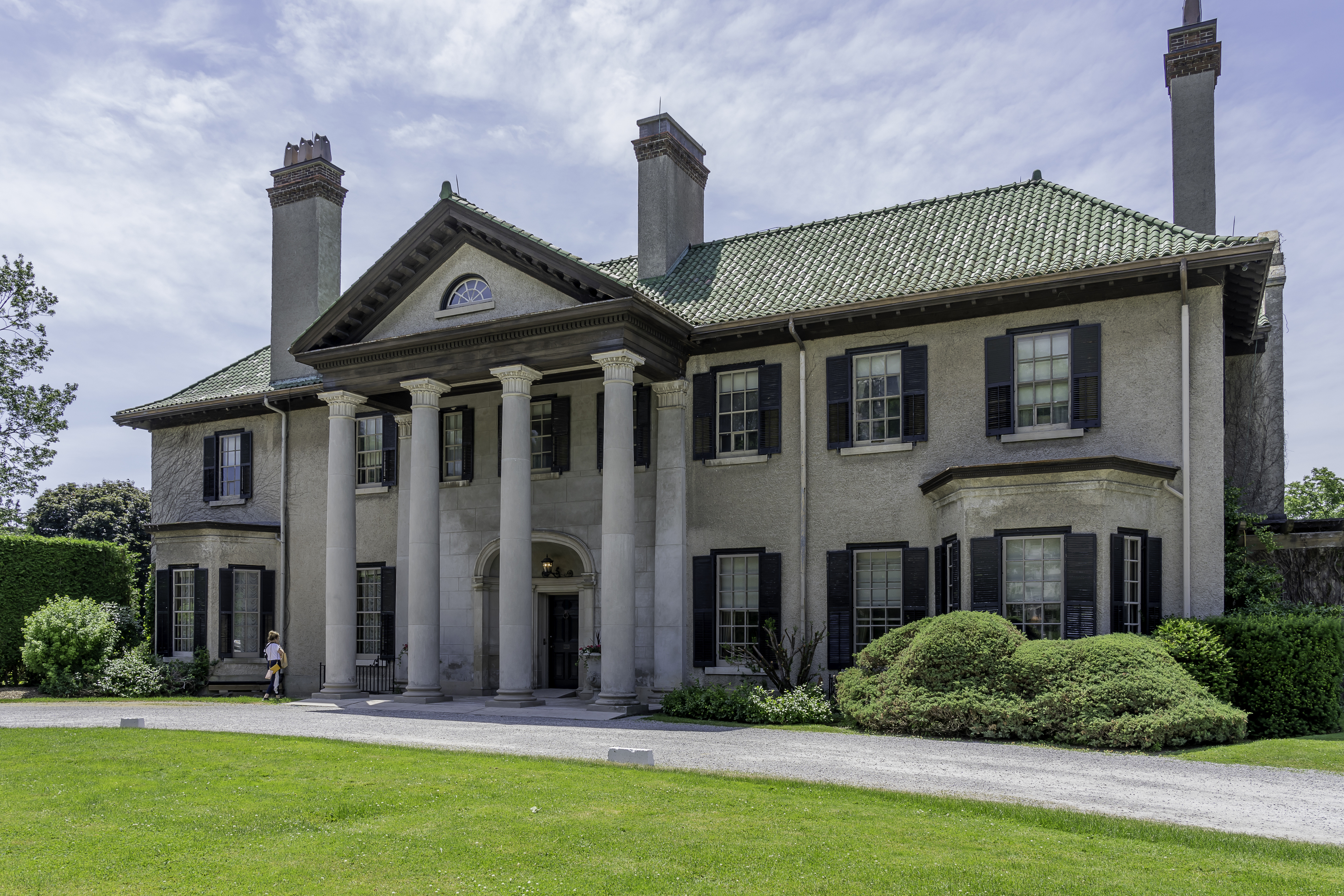 Oshawa, Ontario, Canada - July 01, 2019: Building at Parkwood Estate in Oshawa, Ontario, Canada. Parkwood Estate was the residence of Samuel McLaughlin, now is a a National Historic Site.
Oshawa, Ontario, Canada - July 01, 2019: Building at Parkwood Estate in Oshawa, Ontario, Canada. Parkwood Estate was the residence of Samuel McLaughlin, now is a a National Historic Site.
270 Simcoe St N, Oshawa, ON L1G 4T5, Canada